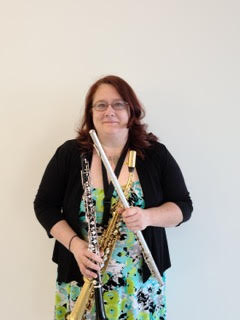WOODWINDS LESSONS
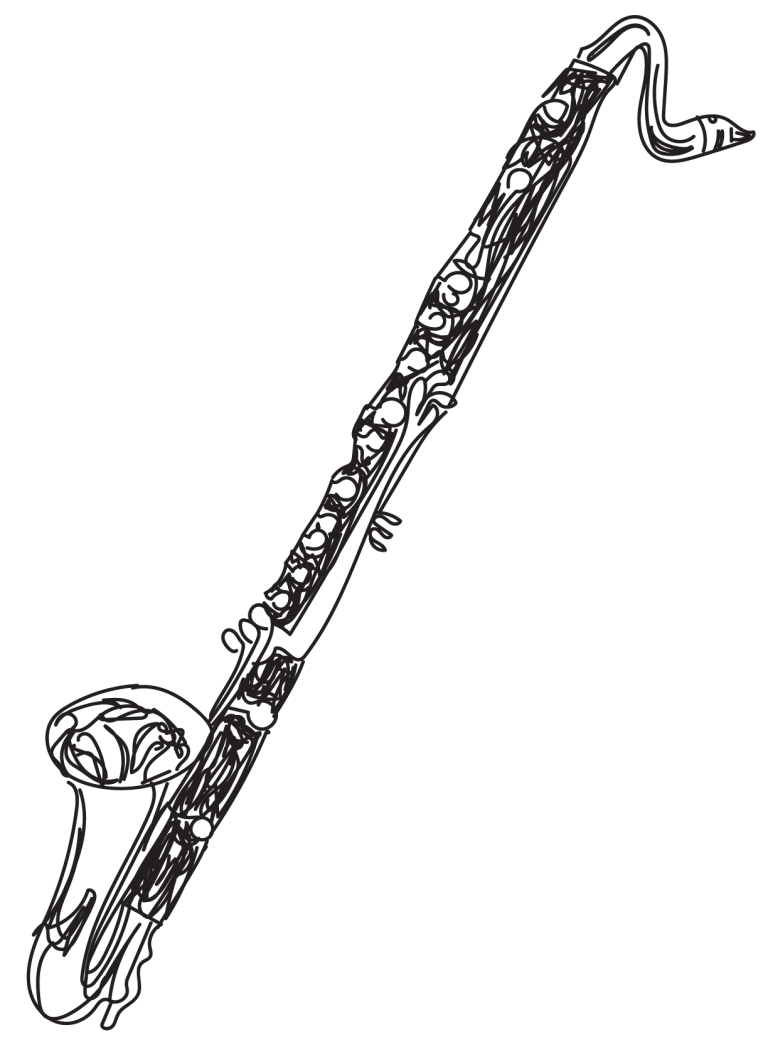
Learn The Woodwind Instrument of Your Choice
If you already play a woodwind instrument, or you want to begin playing one, the Sloan School of Music has everything you need to learn musical skills and succeed at woodwinds! Currently, we offer lessons for saxophone, clarinet, and flute. Our experienced instructors understand the passion for creating music with a woodwind instrument. They understand how to teach students of all ages and experience levels. Plus, all students are encouraged to perform publicly in recitals or ensembles.
Why Play a Woodwind Instrument?
Let’s break this down for you. Each instrument is unique and has its own special charm.
SAXOPHONE
The saxophone makes warm sounds that seem to come from the musician’s soul. Once you know the technique of playing a sax, you can make it play emotions from cheerful to bluesy. Saxophones blend in well with other instruments, but they also make amazing solos. People love to hear a saxophone being played well. You will get plenty of opportunity to play in groups and in public, adding a new social aspect to your life. With patience and perseverance, you can learn to play the saxophone.
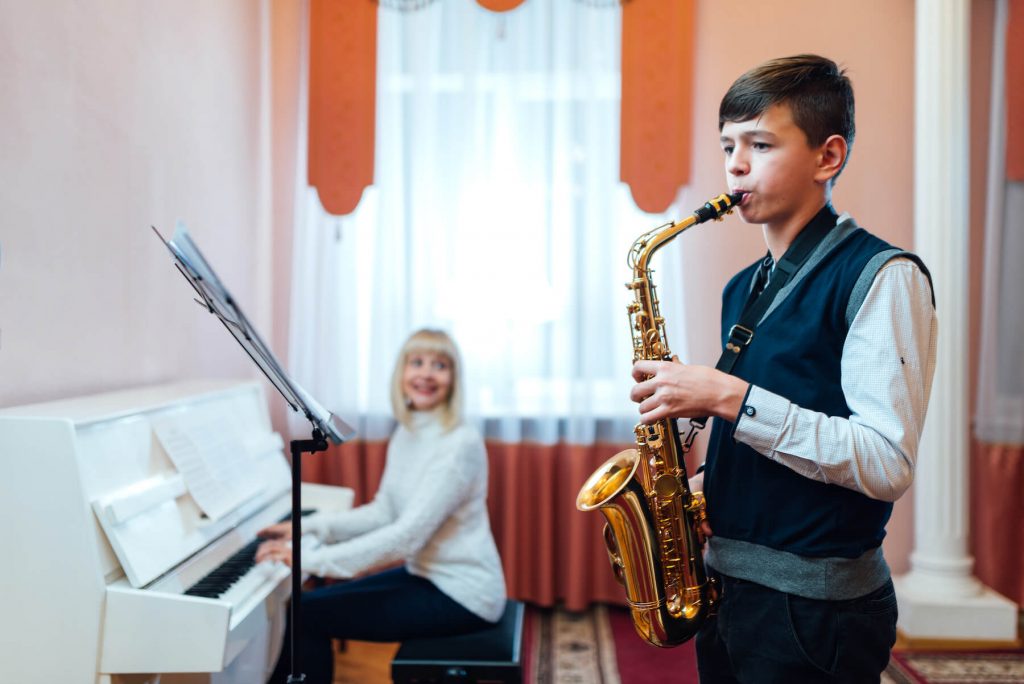

CLARINET
The clarinet is a great beginner instrument. It doesn’t cost much, it’s easy to hold, and it is portable. The fingerings on a clarinet are fairly simple to learn. Also, the clarinet is a versatile instrument. It can be used in different types of music, such as jazz, classical, marching band, and popular. It’s an essential instrument in many bands, and it’s nice to have other clarinets in the group to play with you.
FLUTE
The flute is another small, portable instrument that many beginners prefer over other instruments. Although it is a small instrument, it allows you to play sweet, yet powerful music. Some students love the flute because it does not seem as intimidating as other instruments. We love it because it plays music that comes from all over the world. It is an old instrument, and many cultures past and present wrote music for the flute. A flutist usually has many opportunities to perform. Want to know another fun fact about the flute? The breathing and posture required to play a flute actually helps you become a better person!

An Overview of Woodwinds Instruments

People discovered thousands of years ago that air blown through a hollow object could make sounds. The flute is the earliest known example: A version made of bone was found in a Neanderthal cave and dated back to 50,000 years ago.
Later versions of woodwind instruments were typically made of wood, and manufacturers these days use wood, metal, plastic, or some combination of the three.
These instruments are made of solid tubes or cylinders with holes in them. Each instrument has a mouthpiece at one end and an opening at the other. Small woodwind instruments have higher pitches, while larger instruments play lower notes.
Woodwind musicians play by blowing into the mouthpiece (hence the “wind” in the name) as they cover or uncover holes along the cylinder to change the notes.
Many of these instruments use reeds located in the mouthpieces to assist the playing. Reeds are thin pieces of wood that vibrate as the musician blows air over them to create notes. Some woodwinds’ mouthpieces, like those in clarinets, are single reeds (made from one thin piece of wood) and others, like those in oboes and bassoons, use double reeds (two pieces of thin wood joined together).
Types of Woodwind Instruments
Woodwinds come in various shapes and sizes, and you’ll see many of them in an orchestra. They fall into six major categories:
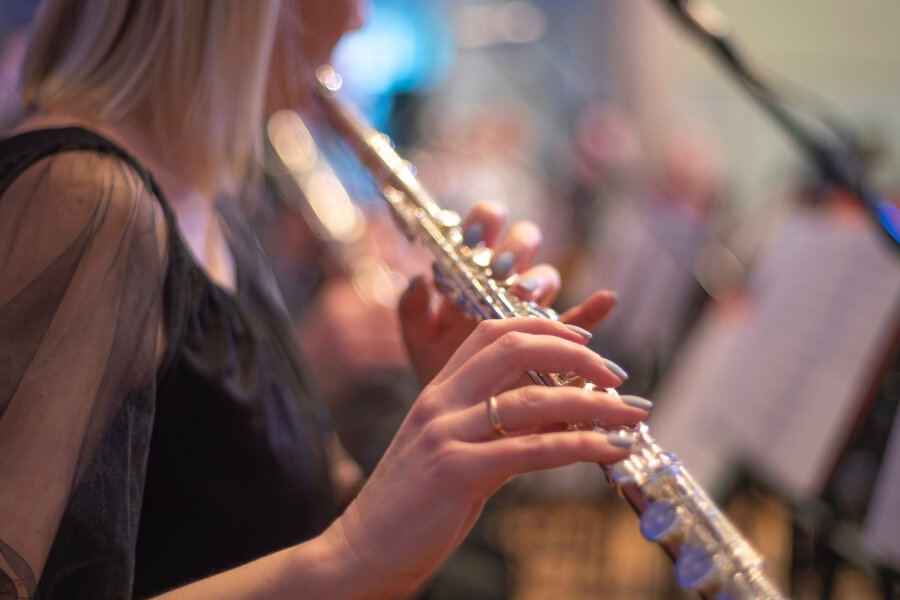
Flute and Piccolo
Flutes are the oldest of the woodwinds and average slightly over 2 feet in length. Piccolos are shorter versions of flutes and play higher sounds.
Clarinet
Clarinets are made in several sizes, though the most common is a little over 2 feet long. Some musical compositions require one clarinet player to play different instruments in the same piece!
Saxophone
These are new to the family of woodwinds, having been introduced around 150 years ago. A sax uses a single reed and is important in jazz and blues music, but it’s used in other styles too. They come in a variety of different sizes and are played in the same fashion as clarinets.
English Horn
An English horn is not English and not a horn, making its name a bit confusing. English horns are closely related to the oboe and are played the same way. They have a wider range and are longer, with a pitch range lower than an oboe.
Oboe
Orchestras usually have two to four oboes. Oboes look like clarinets and are about 2 feet in length with metal keys to cover their holes. They offer a wide range of sounds, making their music easily memorable.
Bassoon
A bassoon has several keys and is almost 9 feet long. The tube is doubled on itself so a player can hold and play it comfortably. It’s played while held upright, like an oboe, by blowing through the double-reed in the mouthpiece.
These are the main woodwinds you’ll see in an orchestra, but there are others available. Instruments such as bagpipes are rarely found in orchestras, but they’re still woodwinds.
What Do You Learn from Woodwind Lessons?
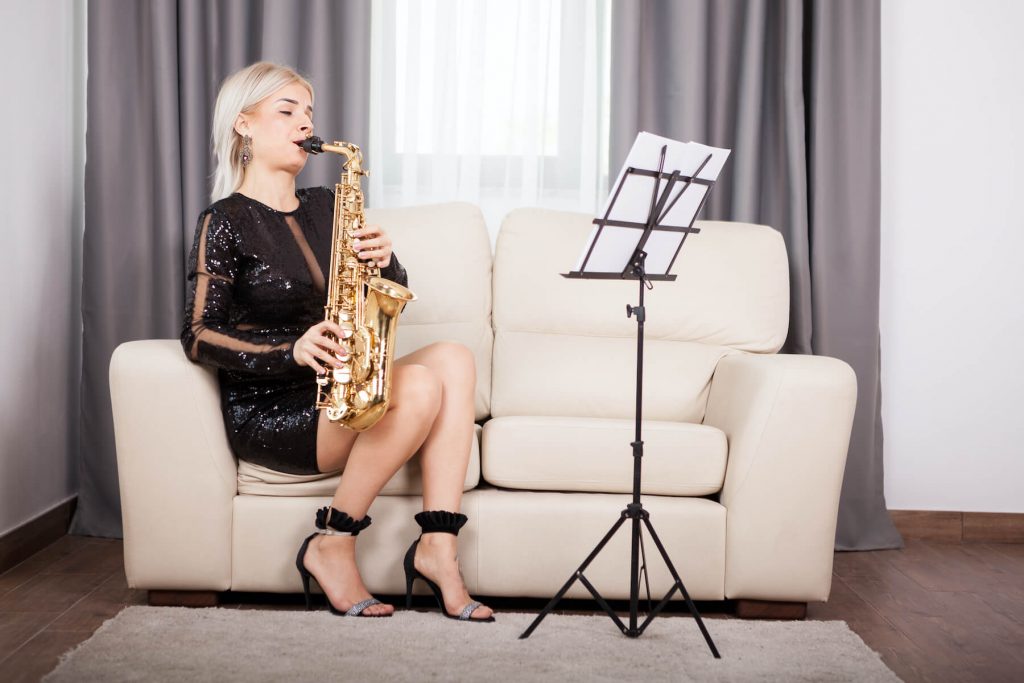
As with all instruments, learning to play a woodwind involves learning to read music and developing technique. Because woodwinds require you to breathe into them, students also learn something called embouchure, or the way the player applies their mouth to the instrument.
Learning to play a woodwind is an exciting experience, and mastering the instrument is a lifelong achievement. While you are patiently practicing and improving your woodwind skills, you are also giving yourself valuable life lessons that will benefit you in academics and the workforce.
All of our woodwind instructors hope to reflect onto their students a love for the instrument and the music it makes. While teaching musical technique, we also want to encourage joyful playing. Music comes from the heart, and we love to hear it as much as we love to play it ourselves.
The Benefits of Woodwinds Lessons at Sloan School of Music
Instructors at Sloan School of Music are not only experts at music but also at teaching music. They can help identify your strengths and areas for improvement as you play.
We pride ourselves on providing a warm, nurturing environment. Our goal is to help you improve as a player and have fun doing it.
We understand the many benefits of playing music. Music lessons help improve posture, poise, and discipline. Learning to play music can also improve your brain function and IQ.
Our one-on-one woodwinds lessons are catered specifically to your skill level, whether you’re a beginner, an expert, or anywhere in between. We also offer group classes to help you get used to playing as part of an orchestra. This is great for socialization and teamwork-building skills.
Frequently Asked Questions About Woodwinds Instrument Lessons
Those who start music lessons are opening themselves up to an exciting new world and an amazing experience. You may have questions, though. Here are some of the common ones we hear:
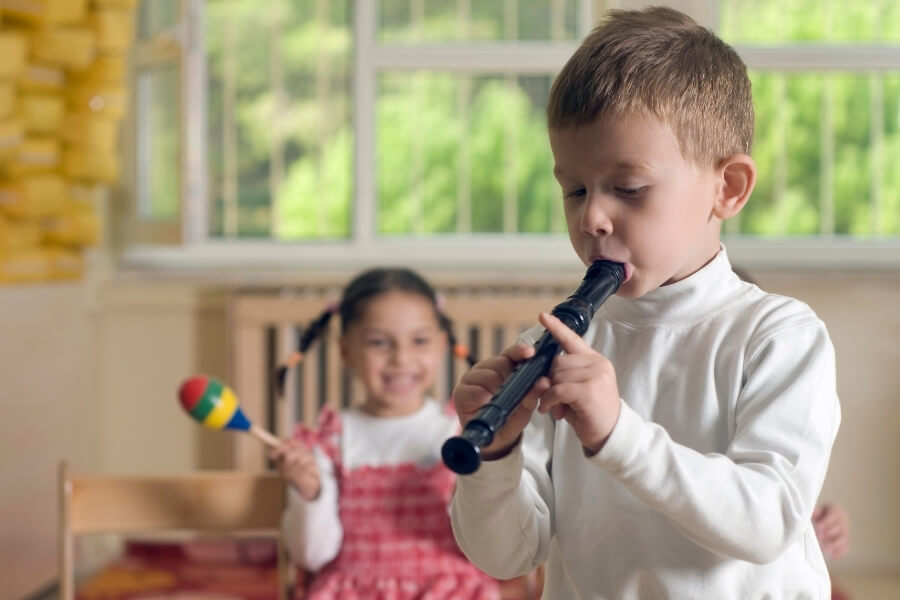
What’s the Earliest Age My Child Can Begin Music Lessons?
Children as young as 6 are well-suited for music lessons. This is the age where most children have learned their alphabet. Your child will also need the ability to sit in one spot for 20 minutes. Sometimes younger children can also take lessons, depending on their ability to focus and concentrate.
Do We Need to Buy Our Own Instrument?
No. You (or your child) will see better progress if you have access to an instrument for at-home practice, though. We offer new and used instruments and rental options to make your lessons affordable, or some beginning students will borrow an instrument from a friend.
How Much Should My Child Practice?
We recommend practicing five to six days a week, with 30-40 minutes of practice per session, to maximize improvement, muscle memory, and comprehension.
Contact our staff if you have any additional questions about woodwinds lessons not covered above. We want you to be completely informed and secure in your decision to choose Sloan School of Music.
Woodwinds Lessons at 2 Convenient Locations
Our friendly staff of experts will be happy to answer your questions. We’ll show you our state-of-the-art facilities and introduce you to our highly trained instructors if you visit us. The Sloan School of Music offers two convenient locations: one in Hagerstown, MD, and one in Urbana, MD.
3 More Reasons to Choose the Sloan School of Music for Your Woodwind Lessons:
The team at Sloan School of Music sees the music business as being about so much more than just the music. We take pride in making the entire experience a positive one for students in the following ways:
1. We Offer Relaxing Facilities
We want both our students and their families to be comfortable. We offer free Wi-Fi and USB charging ports in our spacious waiting areas. We also have complimentary refrigerated beverages at both locations.
2. We’re Teachers First
The Sloan School of Music was started in 2019 by a group of teachers with a passion for both music and teaching it to our students. We’ve made it our mission to give you the best musical instruction possible by focusing on teaching first.
3. We’re Committed to Updating Technology
There are continual advancements in every field, and music is no exception. We stay up to date on any emerging technologies in the music world so your lessons are the most current available.
We know you have several options for music lessons. We feel that by giving you much more than just music lessons, you’ll find it an easy decision to choose Sloan School of Music. Our facilities are constantly upgraded and cleaned to keep our visitors safe and comfortable. Contact our team to sign up for woodwinds lessons.
WOODWINDS INSTRUCTORS
Interested in taking up a woodwind instrument? From the clarinet to the oboe, Sloan School of Music has instructors for all skill levels. Check out our instructors below, and schedule a lesson when you find one that works for you.

Justin Loizos
